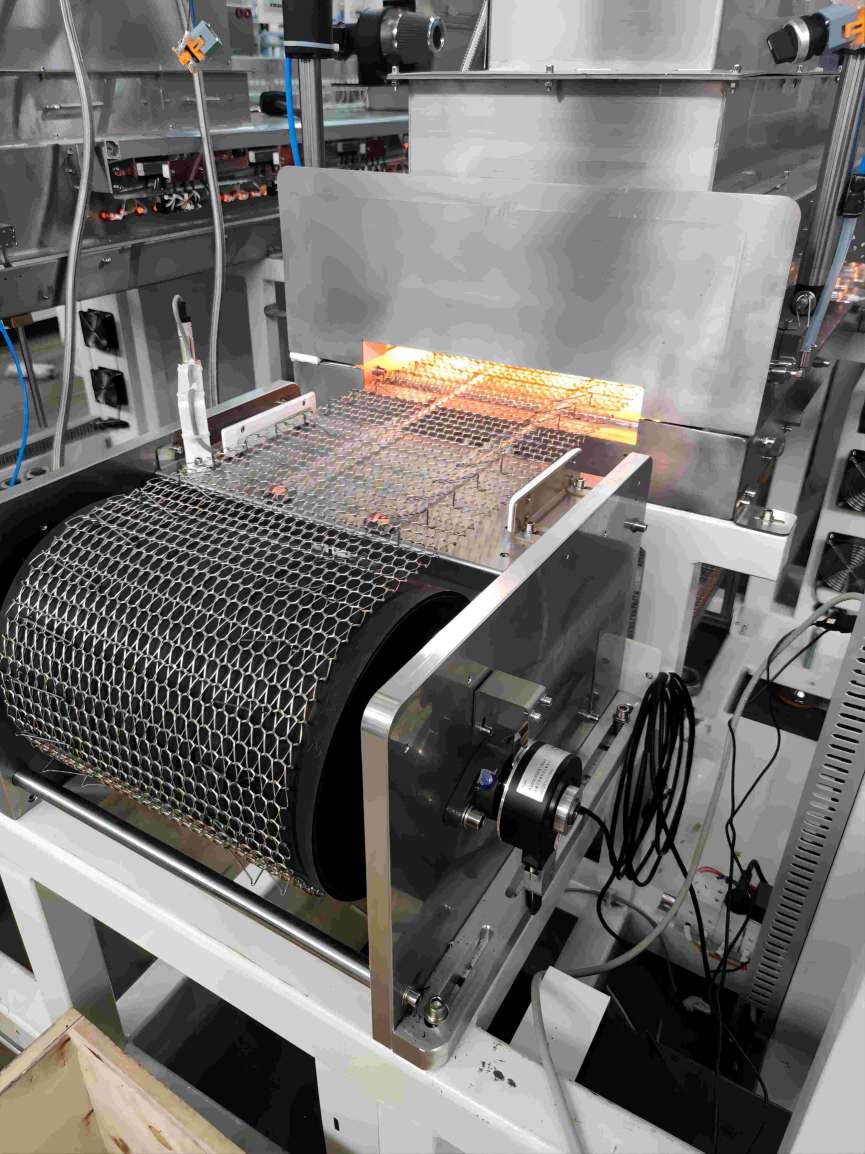Unlike many other solar cell production processes, the sintering process directly reduces the contact resistance and improves the contact stability of the cell surface through physical means.
The principle of the solar cell sintering process
The working principle and pressure of the sintering process of solar cells cause a physical or chemical reaction between the metal electrode material and the surface of the silicon wafer to form alloys or compounds, thereby reducing the contact resistance and increasing the open-circuit voltage and filling factor of the solar cell. At the same time, the sintering process can also promote the diffusion of hydrogen atoms generated in the coating process to the inside of the battery, which has a good passivation effect on the solar cell and improves the photoelectric conversion rate of the solar cell.

The principle of the sintering process can be divided into two types: solid-phase reactions and liquid-phase reactions. Solid-phase reaction refers to the direct reaction of two solid materials at high temperatures to form a solid product. Liquid-phase reaction refers to the reaction of a solid material and a liquid material at high temperatures to form a solid or liquid product. The specific reaction process and products depend on the electrode material and wafer type.
The sintering process of solar cells is a complex process that involves multiple temperature zones and atmosphere control. In general, the sintering process can be broadly divided into four main steps.
Drying and decoking: The purpose of this step is to dry the silicon wafer with slurry after screen printing, and to discharge the organic matter and volatile matter in the slurry as much as possible to avoid the production of harmful gases or residues in the subsequent high-temperature process. The temperature of drying and decoking is generally about 200°C, and the time is between a few seconds and tens of seconds. The effect of drying and decoking will directly affect the quality and efficiency of the solar cell sintering process.
Rapid heating and sintering: The purpose of this step is to bring the metal electrode material and the surface of the silicon wafer to the right temperature, so that the solid-phase or liquid-phase reaction can occur to form a good ohmic contact. The temperature of rapid heating and sintering is generally between 800°C and 1000°C, and the time is between a few seconds and tens of seconds. The temperature and time of rapid heating sintering need to be optimized for different electrode materials and solar cellstructures to achieve the best sintering results.
Cooling: The purpose of cooling is to cool down the sintered silicon wafer quickly, avoid excessive hydrogen atoms escaping from the silicon wafer, and maintain the passivation effect of the silicon wafer. Cooling can be either natural cooling or forced cooling, and the cooling rate is generally between 100°C/s and 200°C/s. The speed and method of cooling need to be selected according to different cell structures and process requirements to avoid thermal stress and thermal shock of silicon wafers.
Passivation: Passivation of a solar cell can form a thin film on its surface, thereby increasing the surface charge density of the silicon wafer, reducing the surface recombination rate, and improving the photoelectric conversion rate of the silicon wafer. Passivation can be chemical passivation or physical passivation, and the passivated materials can be oxides, nitrides, carbides, etc., and different thin film materials will be formed according to different materials. For example, oxide materials form silicon oxide films, nitride materials form silicon nitride films, etc.
How to evaluate the effect of the solar cell sintering process?
The process effect of the sintering process is mainly reflected in the contact resistance, contact stability, contact strength and contact life of the solar cell. The quality of the sintering process directly affects the level and consistency of these aspects, which affects the anti-aging ability and reliability of solar cells.